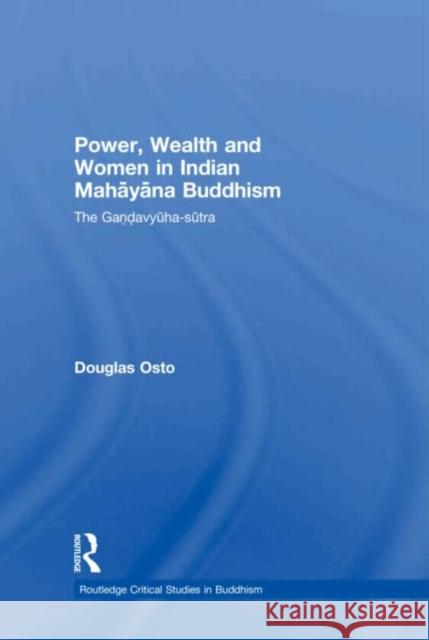Power, Wealth and Women in Indian Mahayana Buddhism : The Gandavyuha-sutra » książka
Power, Wealth and Women in Indian Mahayana Buddhism : The Gandavyuha-sutra
ISBN-13: 9780415480734 / Angielski / Twarda / 2008 / 200 str.
Power, Wealth and Women in Indian Mahayana Buddhism : The Gandavyuha-sutra
ISBN-13: 9780415480734 / Angielski / Twarda / 2008 / 200 str.
(netto: 721,53 VAT: 5%)
Najniższa cena z 30 dni: 730,42 zł
ok. 22 dni roboczych
Bez gwarancji dostawy przed świętami
Darmowa dostawa!
This book examines the concepts of power, wealth and women in the important Mahayana Buddhist scripture known as the Gandavyuha-sutra, and relates these to the text's social context in ancient Indian during the Buddhist Middle Period (0-500 CE). Employing contemporary textual theory, worldview analysis and structural narrative theory, the author puts forward a new approach to the study of Mahayana Buddhist sources, the 'systems approach', by which literature is viewed as embedded in a social system. Consequently, he analyses the Gandavyuha in the contexts of reality, society and the individual, and applies these notions to the key themes of power, wealth and women.
This book presents the most detailed and theoretically sophisticated study of the important Mahayana Buddhist scripture Gandhayuha. This text originated in the first few centuries of the Common Era from the Indian sub-continent, and has been influential in the Buddhist world, first in the Indian context and then in China, Tibet and Indonesia. It was translated into Chinese and became one of the foundational texts of the Chinese Hua-yen school. The sutra was also translated into Tibetan in the early ninth century, and an inscriptional text of it accompanied by paintings can be found until today on the temple walls of Tabo dating to the tenth century. In the late eighth or early ninth century, the complete narrative of the sutra was carved into the gallery walls of the largest Buddhist monument in the world, the Borobudur in Java.
The author puts forward a new approach to the study of Mahayana Buddhist sources, the ‘systems approach’, by which literature is viewed as embedded in a social system. Consequently, in this book, he analyses the key themes of power, wealth and women to its social context in ancient India. The study reveals that the sutra emerged from a monastic context at a time when Buddhist monasteries were not only places of study and contemplation, but also repositories of tremendous wealth donated by the rich and powerful men and women of the day. The text as a narrative meant to be heard (and possibly read) by these men and women, exalts its wealthy, male and female characters as important spiritual teachers.
This book will appeal to upper-level undergraduates, university postgraduates and scholars from such diverse disciplines as religious studies, Buddhist studies, Asian studies, South Asian studies and Indology.











